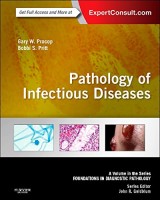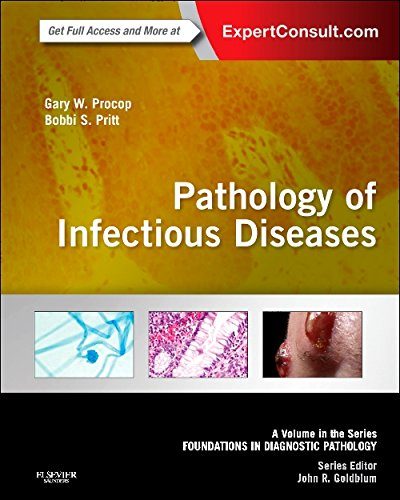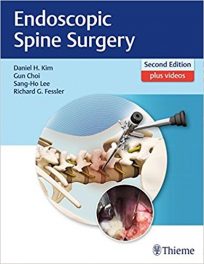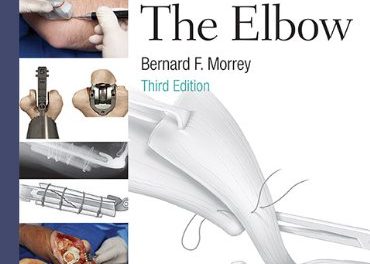 Series Editor: John R. Goldblum. Editors: Gary W. Procop and Bobbi S. Pritt
Series Editor: John R. Goldblum. Editors: Gary W. Procop and Bobbi S. Pritt
Publisher: Elsevier Saunders – 707 pages
Book Review by: Nano Khilnani
There’s such a large number of infectious diseases that have been discovered and studied over the centuries of human existence. There is also a large variety of organisms, which cause the infections and diseases, that you the microbiologist or anatomic pathologist need to be able quickly identify, and know their characteristics, especially in spreading diseases. This book will be very helpful to you in your work of detection, analysis and understanding, and treatment.
Among the four main types of microorganisms – bacteria, fungi, parasites, and viruses – there is a large variety of each. You may be familiar with the appearance and behavior of some of them, and yet there is a lot more to learn.
This book provides you a whole lot of information that 38 contributors from all over the United States, and in Belgium and France, have provided by having authored the 29 chapters organized in seven sections in this book, namely:
- Approach to Infectious Disease Pathology
- Principles of Infectious Disease Pathology: An Introduction
- Viral Infections
- Herpes Viral Infections
- Viral Hepatitis
- Human Papillomavirus, Polyomaviruses, and Parvovirus Infections
- Human Immunodeficiency Virus Infection
- Influenza and Other Respiratory Virus Infections
- Arbovirus Encephalomyelitis
- Viral Encephalomyelitis; Rabies, Enterovirus, and LCM
- Oral Infections and Molluscum Contagiosum
- Bacterial Infections
- Skin and Soft Tissue Infections
- Endocarditis and Other Intravascular Infections
- Bacterial Pneumonia
- Nocardiosis and Infections by Related Species
- Mycetoma; Eumycetoma and Actinomycetoma
- Botryomycoses
- Bacterial Gastrointestinal Infections
- Anaerobic Bacterial Infections
- Bartonella, Coxiella, and Tropheryma Infections
- Rickettsia, Ehrlichia, and Anaplasma Infections
- Mycobacterial Infections
- Tuberculosis and Infections by Nontuberculous Mycobacteria
- Leprosy
- Buruli Ulcer
- Fungal Infections
- Hyalohyphomycoses
- Zygomycosis
- Dermatiaceous Fungal Infections
- Infections with Yeast and Yeastlike Fungi
- Parasitic Infections
- Helminth Infections
- Protozoal Infections
- Artifacts and Pitfalls
- Artifacts and Pitfalls in Infectious Disease Pathology
Rest assured, you will not be overwhelmed with the information provided in the 707 pages of this book because it is well laid out in each chapter, and presented with a variety of visuals and arrangements of text. Let’s take a look at, as a sample, chapter 5 on the HIV virus.
Like other chapters of this book, it provides you either an Introduction or a discussion of a main topic or topics. Among the aspects of the disease being discussed in a chapter that you will find are its: Ancillary Studies, Clinical Features, Differential Diagnoses, Microscopic Findings, Pathologic Features, Prognosis and Therapy, and Radiologic Features.
Throughout all the chapters you will see color micrographs of the diseases with captions, often detailed. You will also see shaded tables and text boxes that present the information in outline form, for easier grasp and understanding. The charts give you different types of views. The color chart entitled 2010: A global view of HIV infection provides you a macro view: a broad map of the entire world showing that 33.3 million people were living with HIV infection in 2009, with shadings depicting what percentages of the population in each area were infected. The most infected (15 to 28 percent) were people living in southern Africa.
The contents of this book, like other Elsevier books, are available online. Enhanced eBooks for medical professionals are compatible with the PC, the Mac, most mobile devices, and eReaders. Expert Consult enables you to browse, search, and interact with this title – online and offline.
To get access to the contents of this book and other information online, first redeem your PIN from the inside front cover of the book. Here is what you do:
1. Login or Sign Up at www.ExpertConsult.com
2. Scratch off the gray stickler on the inside from cover to get your PIN code
3. Enter PIN into the Redeem a Book Code box at the above website
4. Click Redeem
5. Go to My Library
Once you have logged in, these are the innovative features available to you online:
- Seamless, real-time integration between devices
- Straightforward navigation and search
- Notes and highlights sharing with other users through social media
- Enhanced images with annotations, labels, and hot spots for zooming on specific details*
- Live streaming video and animations*
- Self-assessment tools such as questions embedded within the text and multiple-format quizzes. *Some features vary by title
What are some of the key benefits you will derive from this book? They are:
- Quickly find the information you need thanks to a well-organized, user-friendly format with templated headings, detailed illustrations, at-a-glance tables, and segmentation by type of infectious organism-viral, bacterial, fungal, and parasitic.
- Avoid common problems that can lead to an incorrect diagnosis. A special section on artifacts and pitfalls shows you what to look for.
- Get superb visual guidance from an abundance of full-color, high-quality photomicrographs and clinical photos.
- Employ the latest diagnostic advancements including immunohistochemical and molecular techniques.
- Access the full text from any computer, including the entire image bank and links to PubMed, at Expertconsult.
- Learn from one of the very best. Dr. Gary W. Procop, one of the most outstanding young clinical pathologists in medical microbiology in American medicine, shares his vision about how new technologies may be used to rapidly identify pathogenic organisms and detect resistance to treatment regimens.
- Implement proven diagnostic approaches such as real-time PCR assays and pepticnucleic acid probes with guidance from the pioneer of these techniques!
- Use the knowledge, experience and insight of 38 contributors to this book.
Expert Consult provides you access to the eBook version, but you can get a whole lot more valuable information online from an allied website – www.ClinicalKey.com. This search engine of Elsevier Saunders is specially designed for doctors by providing them:
1. Comprehensive Content – the most current, evidence-based answers available for every medical and surgical specialty.
2. Trusted Answers – content supplied by Elsevier, the world’s leading provider of health and science information.
3. Unrivaled Speed to Answer – faster, more relevant clinical answers, so you can spend less time searching and more time caring for your patients.
Editors:
Gary Procop, MD, MS is Medical Director of Enterprise Test Utilization and Pathology Consultative Services; Director of Molecular Biology, Parasitology, and Mycology Laboratories; and Professor of Pathology at the Cleveland Clinic Lerner College of Medicine in Cleveland, Ohio.
Bobbi S Pritt, MD, MSc, (D)TMH is Director of Clinical Parasitology and Initial Processing Laboratories; and Associate Professor of Pathology at Mayo Clinic College of Medicine in Rochester, Minnesota.






